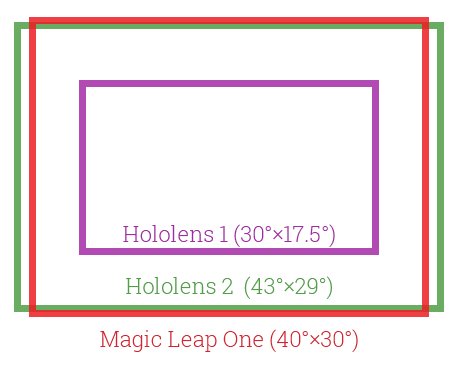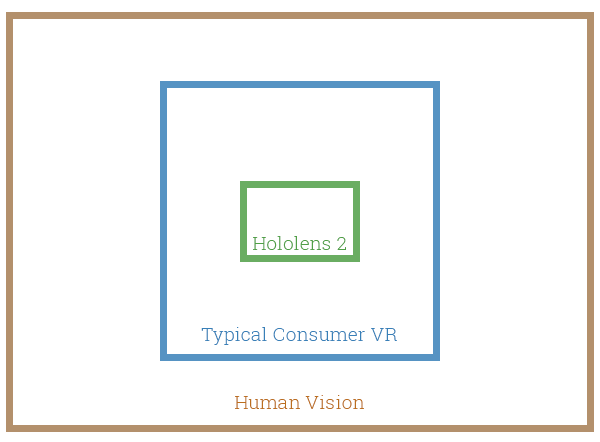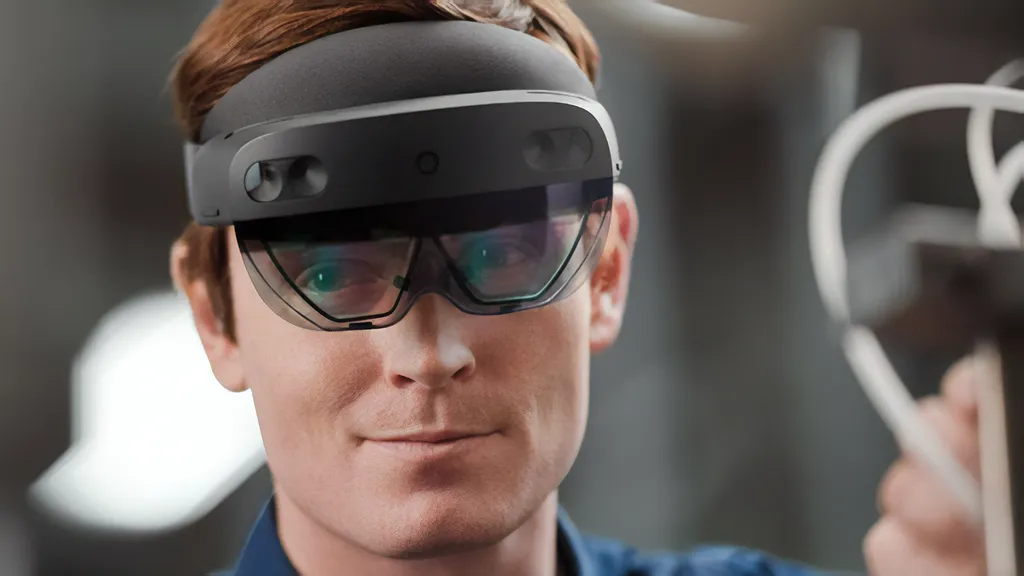At MWC yesterday Microsoft announced the $3500 HoloLens 2 augmented reality headset. On stage the company boasted the headset’s “more than 2x” field of view compared to the original. However, no specific values were given.
Today on Twitter Microsoft’s Alex Kipman clarified the details. The headset provides 52 degrees of augmented viewing when measured diagonally, according to Kipman. Given that the Microsoft website states the headset’s aspect ratio is 3:2, this would give a horizontal FoV of 43° and a vertical of 29° using the basic Pythagorean theorem.

That 43°×29° is an impressive increase over the 30°×17.5° of the original. It’s now roughly equal to the 40°×30° of the $2295 Magic Leap One.
But how is this “more than 2x” the field of view of the original, you might ask? Well it seems Microsoft was referring to the total FoV area — not the per-axis measurements. A 43°×29° FoV is actually around 2.4x the area of 30°×17.5°.
This is an impressive leap forward and will make holographic objects feel slightly more immersive than before. But in perspective, it is still significantly narrower than even a typical VR headset. There is also a ways to go before either AR or VR headsets are capable of filling the entirety of human vision.

HoloLens 2 is the state of the art in augmented reality — using a custom designed laser MEMS display system. However AR technology still has a long way to go before becoming consumer friendly. Just like VR 10 years ago, AR will need several breakthroughs before it is truly ready for consumers. But based on what Microsoft showed us at MWC, we’ve never been more excited for AR’s future.





























